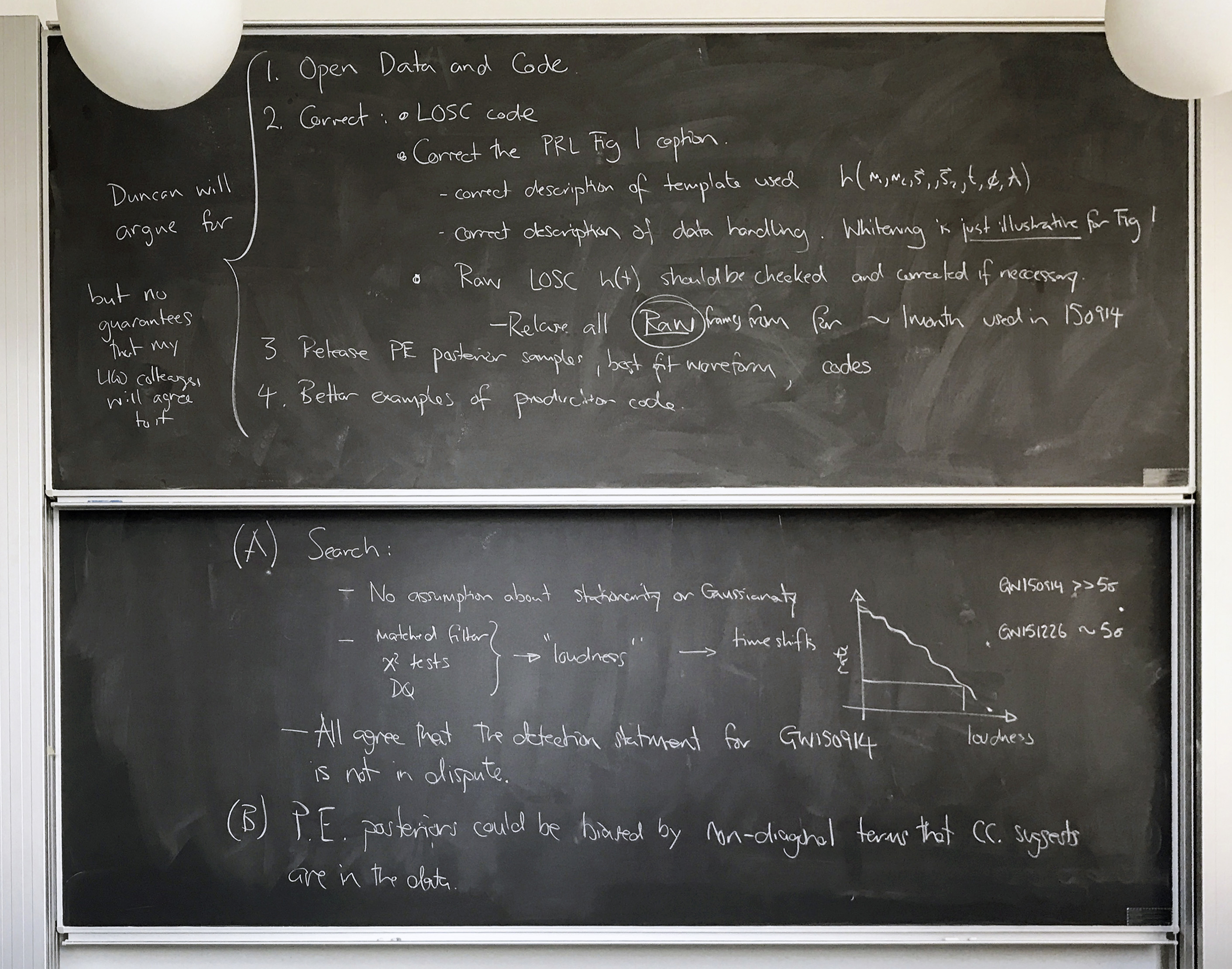During a two-week period at the beginning of August, we had a number of "unofficial" seminars and informal discussions with colleagues participating in the LIGO collaboration. A number of versions of the contents and conclusions of this meeting have subsequently appeared on the internet. Since we feel that none of these reports provides an accurate description of the content or conclusions of these meetings, we would like to offer our own summary. Given the media hype surrounding our recent publication, these meetings began with some measure of scepticism on both sides. The atmosphere improved dramatically as our meetings progressed.
The focus of these meetings was on the detailed presentation and lively critical discussion of the data analysis methods adopted by the two groups. While there was unofficial agreement on a number of important topics - such as the desirability of better public access to LIGO data and codes - we emphasize that no consensus view emerged on fundamental issues related to data analysis and interpretation.
In view of unsubstantiated claims of errors in our calculations, we appreciated the opportunity to go through our respective codes together - line by line when necessary - until agreement was reached. This check did not lead to revisions in the results of calculations reported in versions 1 and 2 of arXiv:1706.04191 or in the version of our paper published in JCAP. It did result in changes to the codes used by our visitors.
There are a number of in-principle issues on which we disagree with LIGO's approach. Given the importance of LIGO's claims, we believe that it is essential to establish the correlation between Hanford and Livingston signals and to determine the shape of these signals without employing templates. Before such comparisons can be made, the quality of data cleaning (which necessarily includes the removal of non-Gaussian and non-stationary instrumental "foreground" effects) must be demonstrated by showing that the residuals consist only of uncorrelated Gaussian noise. We believe that suitable cleaning is a mandatory prerequisite for any meaningful comparisons with specific astrophysical models of GW events. This is why we are concerned, for example, about the pronounced "phase lock" in the LIGO data.
We are also concerned about the remarkably strong correlations between the residual noise in the Hanford and Livingston detectors. Our initial investigations of this correlated noise were restricted to the $0.2$ s time domain of GW150914 only because this data is publicly available. The "noise" patterns detected in this domain (see Fig. 7 of arXiv:1706.04191) are in fact the reflection of a more general feature of the data. In order to illustrate this generality, we have presented the "precursor" and "echo" effects described in the revised version of paper. These correlated noise patterns occur in time domains where the GW templates are very small or do not exist at all, respectively. For these calculations, the use of LIGO's published template (B. P. Abbott et al., Phys. Rev. Lett. 116 (2016) 061102) served only to determine the size of the window used for the computation of the cross-correlator. In this connection we note that the use of other templates requires some care since small adjustments of the location of the time window adopted (i.e., within
Another important point of discussion was related to our cleaning of the $32$ s time stream (raw) data released by LIGO. Specifically, we have shown that our simplified determination of the cleaned time record in the critical $200$ ms of the GW event agrees with LIGO's result with a relative error everywhere less than $3 \times 10^{-4}$. Our demonstration that the residual noise (defined as the cleaned signals for GW150914 minus the corresponding templates) has cross-correlations of the same strength and the same
In light of the above, our view should be clear: We believe that LIGO has not yet attained acceptable standards of data cleaning. Since we regard proof of suitable cleaning as a mandatory prerequisite for any meaningful comparison with specific astrophysical models of GW events, we continue to regard LIGO's claims of GW discovery as interesting but premature.
